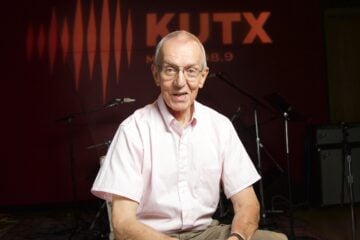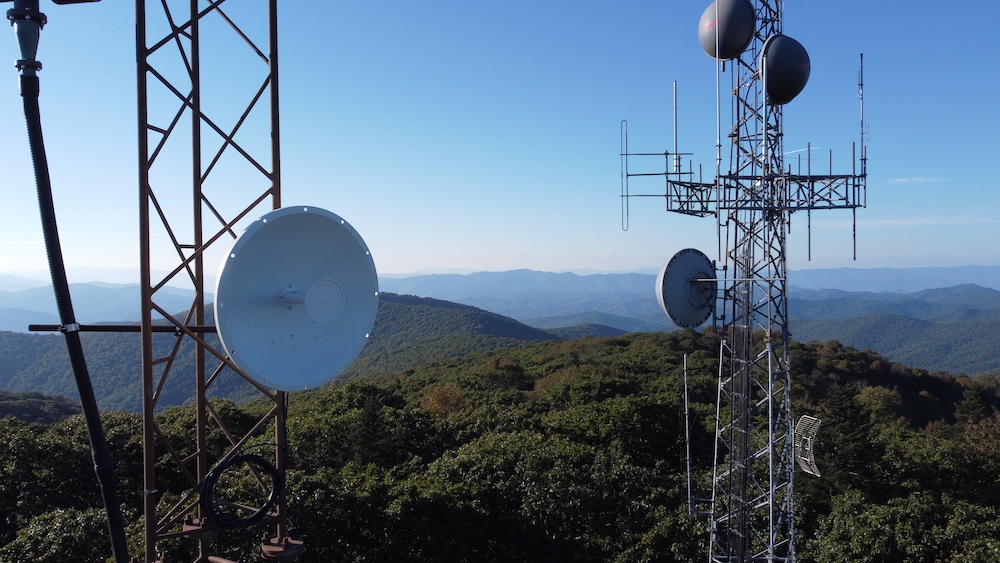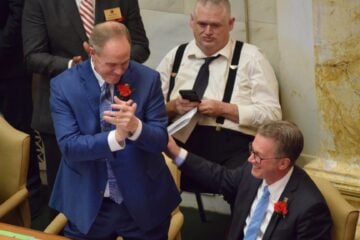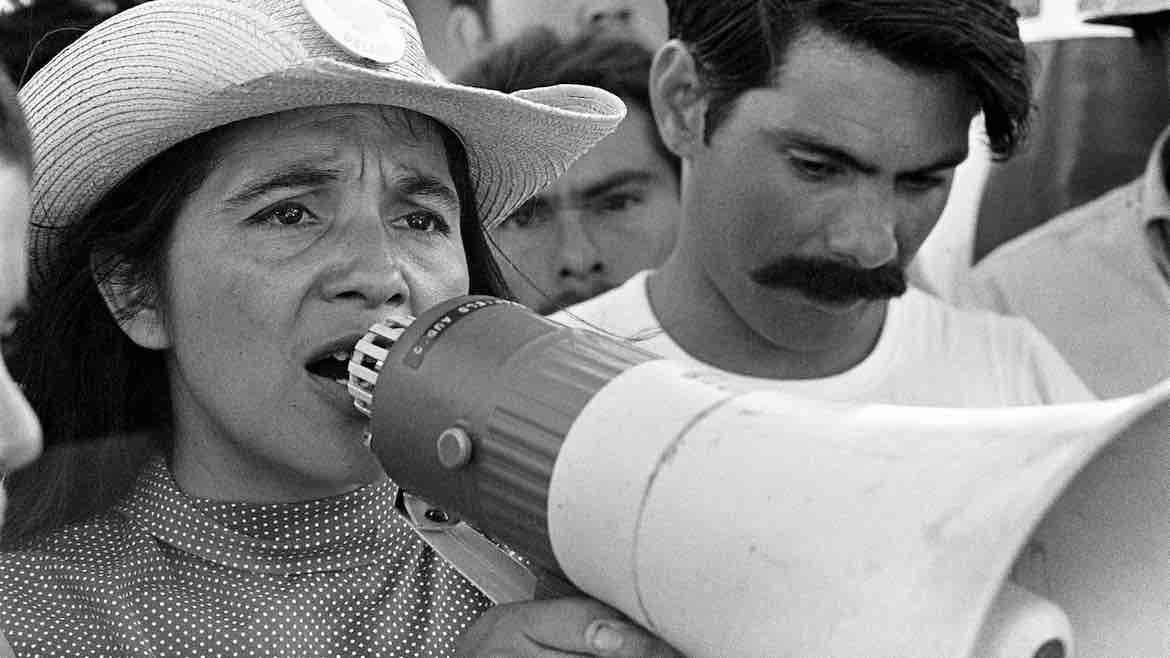How ‘Weathered’ and PBS SoCal teamed up to examine spread of LA wildfires
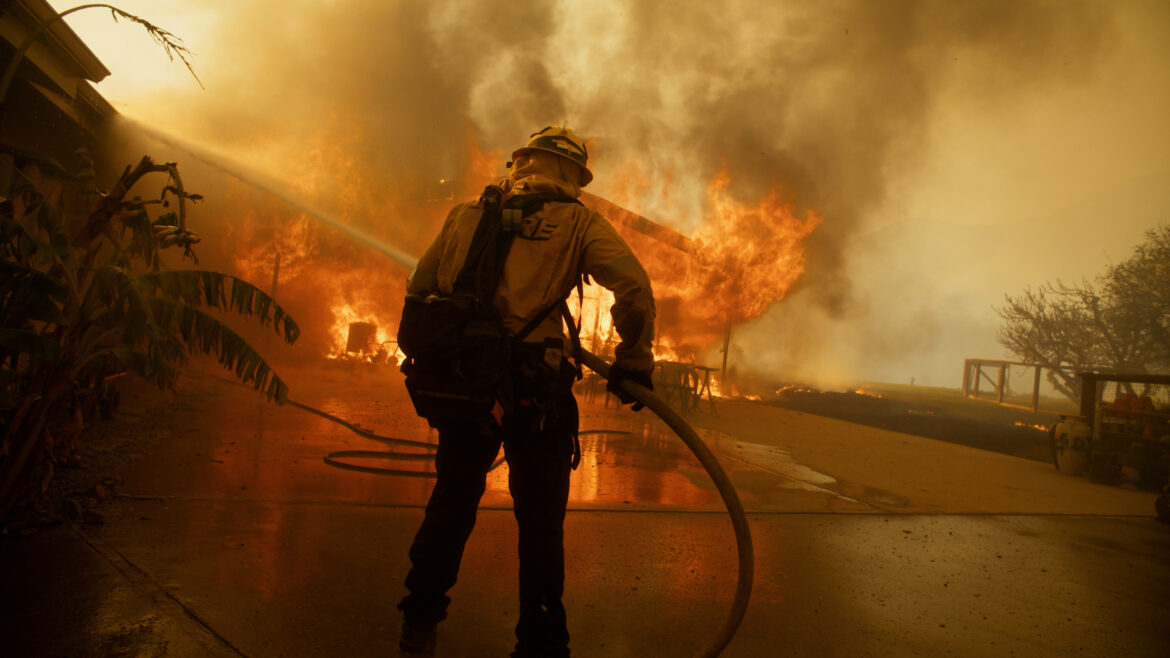
PBS Digital Studios
A firefighter attempts to defend a home during the Palisades Fire in January.
Just two months after the Palisades and Eaton Fires tore through Los Angeles, a new one-hour special about the disaster is set to make its PBS debut.
Weathered: Inside The LA Firestorm will be available on all station-branded PBS platforms Wednesday. It was put together by the fast-moving team behind the popular PBS Digital Studios series Weathered, which since 2020 has amassed more than 30 million views on the science and nature channel PBS Terra.
On the special, host Maiya May meets with community residents, fire officials and climate scientists to probe the environmental factors behind the disaster. The special also presents footage from past Weathered episodes to help make the case for home hardening, or the practice of using fire-resistant materials on and around a home.
Director Trip Jennings says his team was able to complete the special so quickly in part because of Elemental, a documentary about wildfires he released with National Geographic in 2023. Through that film, he developed relationships with fire-savvy film crews around the country, including one in the LA area.
“We all got on the phone when it started happening because they were already filming,” Jennings says. “It was like, ‘What are we going to do with this footage?’, because what they had was really spectacular. They were shooting on an 8K, hi-res camera in the fires and it’s a different look. It feels like a documentary instead of news.”
Because of the film’s resolution, filmmakers were also able to slow the footage way down at points, effectively documenting how the fire moved from house to house by following a fence line or igniting a hedge. “We could build a story with this kind of footage that we’d never really had access to before,” Jennings explains.
The film builds a compelling case around the danger of embers, capturing not only beautifully composed shots of them flying through the air but also footage of them bouncing off homes, trees and landscaping. Through the new footage, interviews with experts and a particularly convincing bit of side-by-side testing previously shot at the Insurance Institute for Business & Home Safety, it becomes increasingly clear that the Palisades and Eaton fires were practically unstoppable, particularly to homes that hadn’t been hardened to the elements.
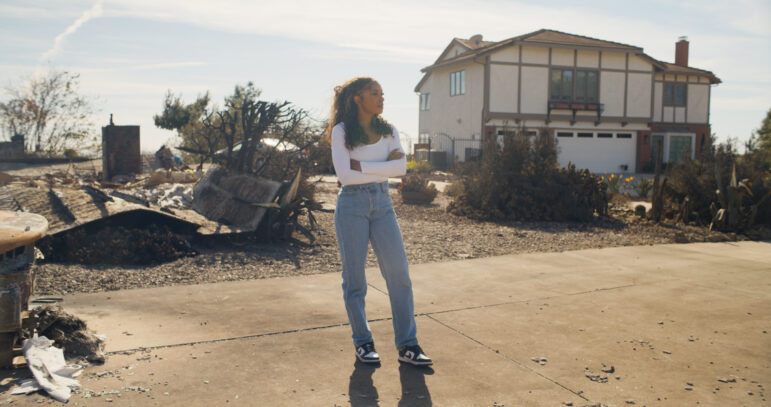
“There’s never going to be enough resources to fight a large-scale urban conflagration like we saw here in January, so the biggest takeaway for me after doing this investigation is that we need to prioritize adaptation and home hardening,” May says in an interview. “If we can focus on making our structures more resilient, then when the next wildfire starts to creep into our communities our firefighters will have more time to slow it down so that it won’t reach the levels we just saw.”
‘We can all learn from each other’
Production on the film officially began Jan. 8, one day after the fires erupted. PBS officially greenlit the film just five days later — a pretty impressive turnaround when you consider that PBS SoCal, which joined the project as presenting station, was responding to the crisis locally.
More than 20 members of PBS SoCal’s staff were affected by the wildfires, and the special was also deeply personal to them, says Tamara Gould, PBS SoCal CCO. They wanted to feel useful as the disaster unfolded.
“One of the first things we did after the fires was to call the station in Lahaina, [Hawaii, and we talked to the station in Asheville, North Carolina, about how they handled their coverage after their natural disasters,” Gould says. “We asked, ‘What was useful to your community? What worked and what would you have done differently? I think that’s where our system — the local and national nature of public broadcasting — is so helpful, because we can all learn from each other and share what we’re learning.”
Another takeaway from those calls was the decision to create a resource guide of trusted information for local residents, as well as a daily newsletter about the fires. Produced in partnership with LAist in Pasadena, KCRW in Santa Monica, and Sacramento-based CalMatters, the newsletter is sent to the membership and newsletter subscribers for each news organization, Gould says. It has an open rate of about 45%. The collective reach of all the newsletters sent so far is 14 million, she adds.
“People living in LA are really hungry for the kind of information that we can provide,” Gould says. “This partnership is really clear proof of the need for public media to be a place where people can get critical, truly life-saving information.”
A Wednesday preview screening at the LAist offices in Pasadena was just a few miles from where the Eaton Fire ignited. In a post-screening discussion, May, Jennings, and two of the documentary’s subjects talked about what they hoped the world could learn from the tragedy.
“It was really moving to be able to host the premiere of the film in Pasadena,” Gould says. “There was a very strong showing of people in the room who were looking for the opportunity to share their experience collectively, to be together and to see what happened on-screen. There really was a lot of comfort in having it come so soon after the fires.”
Correction: An earlier version of this story mischaracterized PBS SoCal’s role in Inside the LA Firestorm. PBS greenlit the production, not PBS SoCal. PBS SoCal signed on as the presenting station for the special.


